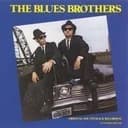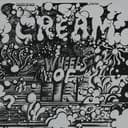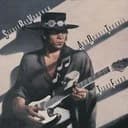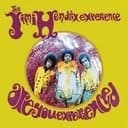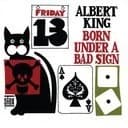The blues scale's origins trace back to African-American communities in the Mississippi Delta and surrounding regions during the late 1800s and early 1900s, where musicians merged West African melodic traditions with Western harmonic frameworks. The "blue note"—the ♭5 (B in F blues)—represents a calculated pitch ambiguity that exists between standard Western scale degrees. In authentic blues performance, musicians frequently "bend" this note, sliding smoothly between the perfect 4th (B♭) and perfect 5th (C), creating microtonal expressions that mirror the vocal inflections and emotional depth fundamental to blues aesthetics. This pitch bending technique, which resists precise Western notation, became the sonic signature of blues guitar, harmonica, and vocal styles. The ♭5 interval also generates tritone tension against the root note, producing dissonance that resolves satisfyingly when moving toward either the 4th or 5th scale degree, adding harmonic interest and emotional weight to improvised phrases.
How to Use the Blues Scale
The F Blues Scale thrives in improvisation over blues progressions, especially the traditional 12-bar blues form in F (F7-B♭7-F7-C7-B♭7-F7). Unlike modal scales requiring careful note selection over changing harmonies, the blues scale functions remarkably well across all three dominant seventh chords (I7, IV7, V7) in a blues progression, making it accessible for improvisers at any skill level. When soloing, emphasize the blue note (B) by approaching it from adjacent pitches and resolving to B♭ or C—this technique produces the archetypal "blues lick" sound heard throughout the genre's recorded history. Develop authentic blues vocabulary by exploring rhythmic variations, triplet phrasing, and call-and-response patterns that reflect the conversational nature of blues expression. The scale also works effectively over dominant seventh chord vamps in rock, funk, and jazz settings. For added harmonic color, combine the blues scale with the F Minor Pentatonic or F Dorian mode, alternating between them to create melodic depth and contrast.
Blues Scale vs Minor Pentatonic
The F Blues Scale and F Minor Pentatonic Scale are nearly identical structures, differing by a single chromatic note: the ♭5 (B). The F Minor Pentatonic contains F-A♭-B♭-C-E♭, while the blues scale inserts B between B♭ and C, yielding F-A♭-B♭-B-C-E♭. This one additional note transforms the scale's sonic character from the minor pentatonic's stable, consonant foundation to the blues scale's edgier, more emotionally charged quality. Many blues, rock, and jazz musicians treat both scales as interchangeable tools, using the ♭5 as an optional chromatic passing tone or accent note for heightened expression. The blues scale can be conceptualized as "minor pentatonic plus the blue note," simplifying its integration into pentatonic-based improvisation. When practicing, establish familiarity with the minor pentatonic framework first, then gradually incorporate the B, paying close attention to how this chromatic tone adds tension and resolution within your melodic phrases.
Common Blues Progressions
The F Blues Scale navigates the classic 12-bar blues progression effortlessly, the cornerstone harmonic structure of blues music. In F, this progression typically follows: F7 (4 bars) - B♭7 (2 bars) - F7 (2 bars) - C7 (1 bar) - B♭7 (1 bar) - F7 (2 bars). The I-IV-V chord sequence (F7-B♭7-C7) establishes tension and resolution cycles that the blues scale complements naturally, as every scale tone relates harmonically to all three dominant seventh chords. Beyond the 12-bar format, the blues scale also functions over single-chord vamps (F7 or Fm7 grooves), "quick-change" blues variations (IV7 chord appearing in bar 2), and sophisticated jazz-blues progressions incorporating ii-V-I turnarounds and substitute chords. Practice the scale over these progressions while emphasizing chord tones (F, A♭, C, E♭) on strong beats to construct melodic lines that outline the underlying harmony. The blues scale's versatility reaches far beyond traditional blues, influencing rock, funk, R&B, and contemporary pop music that draws from blues harmonic language and expressive techniques.
Famous Applications and Artists
The F Blues Scale has served as a fundamental tool for legendary musicians spanning multiple eras and musical styles. B.B. King developed his entire improvisational approach around blues scales, extracting maximum emotional impact from minimal note selection through his distinctive vibrato and precise string bending. Eric Clapton's electrifying "Crossroads" solo exemplifies the blues scale's potency in high-octane rock environments, while Stevie Ray Vaughan's "Pride and Joy" demonstrates its application in Texas blues shuffle contexts. Jazz innovators like Miles Davis integrated blues scales into modal jazz frameworks, proving the scale's relevance extends far beyond its folk roots. Rock guitarists from Jimmy Page to Slash have built iconic riffs and solos on blues scale foundations. Contemporary artists continue this legacy—John Mayer's blues-rock synthesis and Gary Clark Jr.'s progressive blues approach both rely heavily on blues scale vocabulary for melodic and harmonic content. The scale's influence permeates R&B and soul music, where vocalists employ blue note inflections to inject emotional nuance into melodic phrases. Mastering the blues scale connects you directly to this extensive musical heritage and provides essential groundwork for developing authentic, expressive improvisation across diverse musical contexts.
